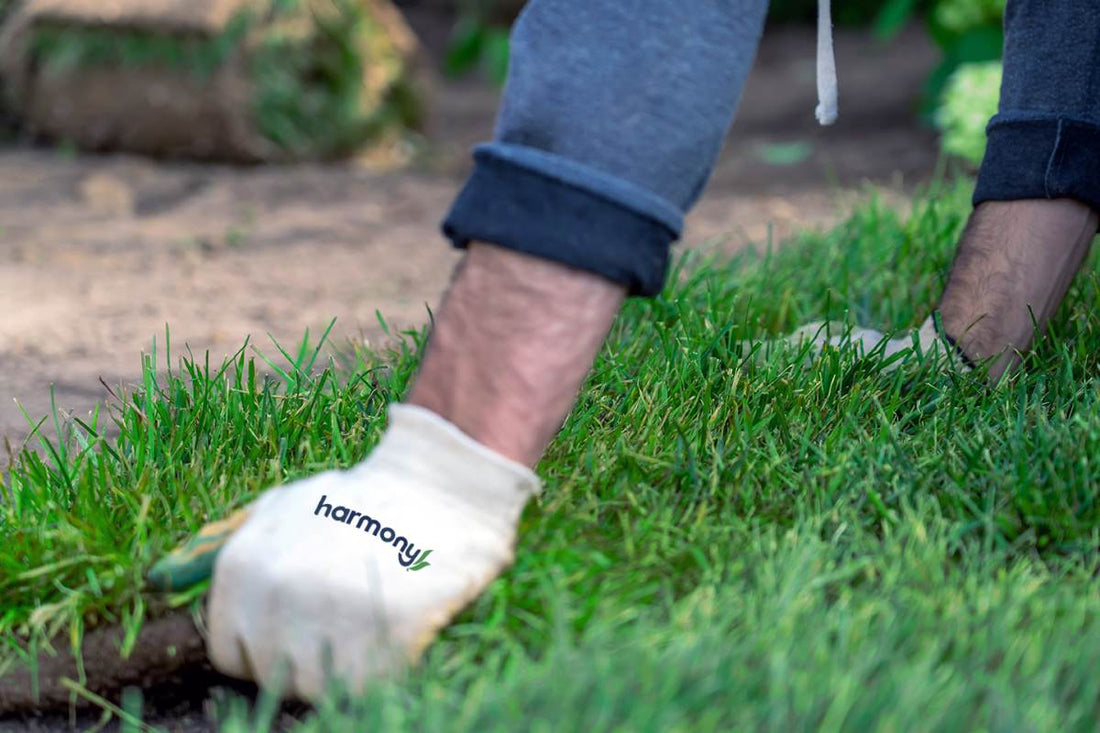
6 Beginner Mistakes to Avoid When Laying Sod
Jamie TedderSod installation is an excellent way to elevate your lawn, transforming a barren landscape into a lush, green outdoor space almost instantly. Many homeowners choose this lawn care solution due to its several advantages over other sodding methods. These advantages include nearly instant coverage and faster establishment, which increases the success of a healthy, dense lawn. However, the key to accessing these benefits lies in doing it right. Just as there are important steps to take when installing sod, there are also common mistakes to avoid, starting with proper preparation.
1. Poor Soil Preparation
The process of laying new sod starts way ahead of installing the first piece or searching for sod suppliers near you. Preparing the area where you want to install the sod is crucial, and this involves removing any existing grass, weeds, and debris and ensuring the soil is level and, if necessary, fertilized. You should ensure the surface is clear and free of anything that may interfere with sod-to-soil contact.
Although optional, conducting a soil test can guide you in fertilizing and adding soil amendments to create an environment conducive to healthy growth. After that, level your lawn so it's flat and even. Consider aerating your soil to relieve soil compaction and aid in rooting.
2. Buying Sod Too Soon
While it’s wise to research early when planning your sod installation—selecting the right grass type that suits your climate and soil conditions, such as sun exposure and shade—it’s crucial to time your purchase correctly. Sod is a living plant that starts to dry out as soon as it's harvested. Ordering your sod too early can lead to it sitting on a pallet, drying out before you have a chance to lay. it.
Avoid this issue by planning to have your sod delivered on the day you intend to install it. This ensures that the sod is fresh and your lawn is ready for installation as soon as it arrives.

3. Leaving Gaps or Overlapping the Sod
Leaving gaps between sod pieces or overlapping them are mistakes that can equally lead to an uneven look in your lawn. Gaps allow weeds to grow and expose bare soil to sunlight, which increases the risk of the sod drying out from the edges and prevents it from rooting properly.
Meanwhile, overlapping sod may seem like it will guarantee full coverage, but it will result in lumps on your lawn. Ensure that you're laying the grass sod side by side without overlaps or gaps. Stagger the rows like bricks in a wall to reduce gaps and ensure an even, uniform lawn.
4. Forgetting to Roll
Rolling the sod after installation is crucial for ensuring good contact with the soil. This practice removes air pockets, which can dry out the sod and lead to its death. If the sod is not flattened correctly, it can also result in an uneven appearance with bumps and dips.
Using a sod roller, go over your entire lawn after laying the sod. This ensures it sits flat against the soil, facilitating better rooting and a smoother, more attractive lawn.
5. Watering Too Much or Not Enough
Newly installed sod requires consistent watering to keep the soil moist during the initial establishment stage. Water the soil enough to keep the top inch moist but not waterlogged. Both overwatering and underwatering can be equally damaging to your new sod.
Ensure proper watering by irrigating immediately after installation to help the sod establish contact with the soil. Adjust watering based on weather conditions—water more in hot, dry weather and less in cool, wet weather. After the initial establishment stage, taper your watering to the recommended amount for your grass type, which for most warm-season grasses is 1-1.5 inches of water per week.

6. Mowing Too Soon
Although new sod may look dense and green, remember that it is harvested with its roots severed and needs time to re-establish before it can handle mowing.
Mowing too soon can damage the developing roots with the weight of the lawn mower and lead to scalping if the grass blades are cut too short. Without an extensive root system to hold it down, the sod can also dislodge during mowing. It's advisable to wait at least two weeks after sod installation or when you see new signs of growth before mowing your grass for the first time.
Buy High-Quality Sod for Sale at Bethel Farms
Avoiding these common mistakes when laying sod is essential to achieving a healthy, lush, and resilient lawn. Proper preparation, careful placement, rolling, consistent watering, and patience before mowing are all critical steps to ensure your sod takes root and flourishes. Read here for a comprehensive guide on how to lay sod.
Bethel Farms is a trusted supplier of high-quality grass for sale in Central Florida. We offer a wide range of warm-season grasses for sod installation, including Bermuda, Zoysia, and St. Augustine. Our expertise and selection ensure that you can access the best grass types for your specific needs, helping you achieve a healthy, dense, and resilient lawn.
Visit the Bethel Farms website today for more expert tips on lawn care or to explore high-quality grass for sale.

